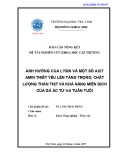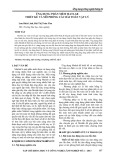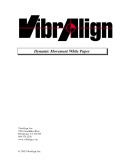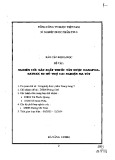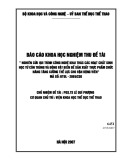
BioMed Central
Page 1 of 6
(page number not for citation purposes)
Head & Face Medicine
Open Access
Research
Decreased CD90 expression in human mesenchymal stem cells by
applying mechanical stimulation
Anne Wiesmann*1, Hans-Jörg Bühring1, Christoph Mentrup2 and Hans-
Peter Wiesmann2
Address: 1Medizinische Klinik und Poliklinik, Abteilung für Hämatologie, Onkologie, Immunologie und Rheumatologie, Universitätsklinikum
Tübingen, Otfried-Müller-Str. 10, D-72076 Tübingen, Germany and 2Klinik und Poliklinik für Mund und Kiefer-Gesichtschirurgie, Westfälische
Wilhelms-Universität Münster, D-48149 Münster, Germany
Email: Anne Wiesmann* - anne.wiesmann@med.uni-tuebingen.de; Hans-Jörg Bühring - hans-joerg.buehring@uni-tuebingen.de;
Christoph Mentrup - mentrup@uni-muenster.de; Hans-Peter Wiesmann - wiesmap@uni-muenster.de
* Corresponding author
Abstract
Background: Mesenchymal stem cells (MSC) are multipotent cells which can differentiate along
osteogenic, chondrogenic, and adipogenic lineages. The present study was designed to investigate
the influence of mechanical force as a specific physiological stress on the differentiation of (MSC)
to osteoblast-like cells.
Methods: Human MSC were cultured in osteoinductive medium with or without cyclic uniaxial
mechanical stimulation (2000 µstrain, 200 cycles per day, 1 Hz). Cultured cells were analysed for
expression of collagen type I, osteocalcin, osteonectin, and CD90. To evaluate the biomineral
formation the content of bound calcium in the cultures was determined.
Results: After 14 days in culture immunfluorescence staining revealed enhancement of collagen
type I and osteonectin expression in response to mechanical stimulation. In contrast, mechanically
stimulated cultures stained negative for CD90. In stimulated and unstimulated cultures an increase
in the calcium content over time was observed. After 21 days in culture the calcium content in
mechanical stimulated cultures was significantly higher compared to unstimulated control cultures.
Conclusion: These results demonstrate the influence of mechanical force on the differentiation
of human MSC into osteoblast-like cells in vitro. While significant enhancement of the biomineral
formation by mechanical stimulation is not detected before 21 days, effects on the extracellular
matrix became already obvious after 14 days. The decrease of CD90 expression in mechanically
stimulated cultures compared to unstimulated control cultures suggests that CD90 is only
transiently expressed expression during the differentiation of MSC to osteoblast-like cells in
culture.
Background
Mesenchymal stem cells (MSC) are pluripotent cells with
the ability to differentiate along osteogenic, chondro-
genic, and adipogenic lineages [1]. MSC, first described by
Friedenstein [2], have also been denoted as mesenchymal
progenitor cells, fibroblast colony-forming units, colony-
Published: 31 March 2006
Head & Face Medicine 2006, 2:8 doi:10.1186/1746-160X-2-8
Received: 05 February 2006
Accepted: 31 March 2006
This article is available from: http://www.head-face-med.com/content/2/1/8
© 2006 Wiesmann et al; licensee BioMed Central Ltd.
This is an Open Access article distributed under the terms of the Creative Commons Attribution License (http://creativecommons.org/licenses/by/2.0),
which permits unrestricted use, distribution, and reproduction in any medium, provided the original work is properly cited.





